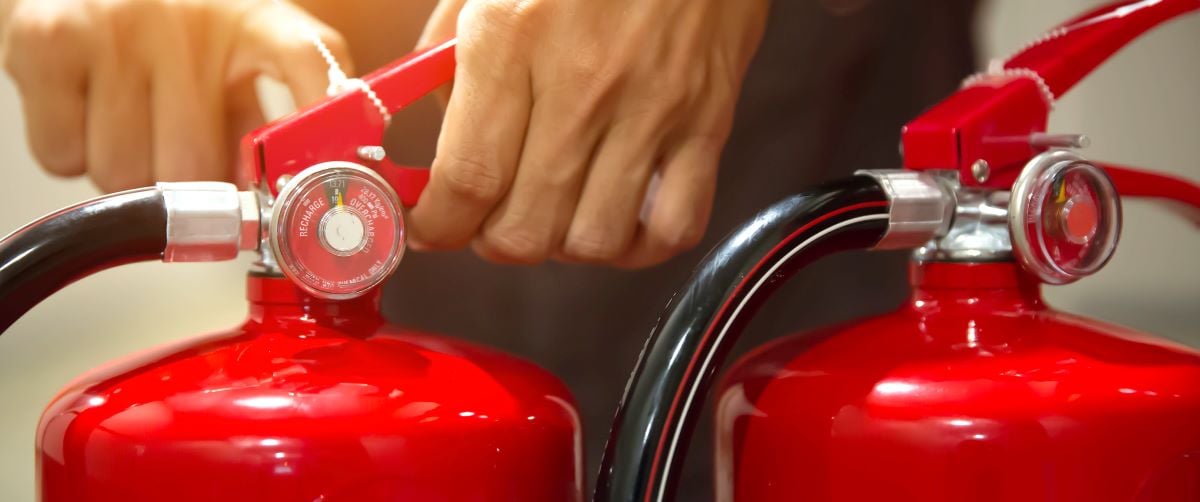
There are two types of fire extinguishers.
A stored pressure extinguisher is a cylinder that contains an extinguishing agent and is pressurized with Nitrogen or dry air.
In a cartridge-operated extinguisher, the cylinder is filled with an extinguishing agent, but it isn’t pressurized. Instead, a cartridge containing pressurized carbon dioxide is attached to the unit.
Each type of fire extinguisher should receive basic fire extinguisher service once per year and an advanced inspection every six years.
Stored Pressure Fire Extinguishers
The National Fire Protection Agency (NFPA) requires fire extinguisher service on an annual basis. During routine service, the inspector will look for corrosion and other signs of damage. If a device cannot perform its function safely and effectively due to damage, it should no longer be available for use.
Basic Fire Extinguisher Inspections
The basic inspection involves visually checking the unit for signs of damage. The inspector will also ensure that no one has used the device, as used extinguishers must always be replaced. They’ll also check the hose for blockages.
The inspection for stored pressure extinguishers includes checking the pressure gauge. Weighing of the extinguisher only happens after the stored pressure extinguisher is recharged.
Advanced Inspection Service
Advanced inspection, which occurs in six-year intervals, involves disassembling the unit and checking the interior of the cylinder for corrosion. Since this requires the inspector to empty the cylinder's contents, they’ll refill the cylinder with the proper extinguishing agent, reassemble the device, and repressurize the contents.
Cartridge-Operated Fire Extinguishers
Cartridge-Operated fire extinguishers must also undergo inspections at one and twelve-year intervals.
Basic Fire Extinguisher Service
This type of inspection closely resembles the basic service a pressurized extinguisher receives. However, the contents aren’t pressurized, so it’s easier to examine the unit's interior.
Once the contents have been refilled, the inspector will replace the cylinder fill cap and O-ring. Before installing a new inspection tag, they’ll also inspect the pressurized CO2 cartridge for damage.
Advanced Inspection Service
Cartridge operated extinguishers get annual inspections as well as a hydro test every twelve years.
The inspection is similar to that of the pressurized extinguisher. This involves removing the contents and changes to the extinguishing agent.
The inspector then checks the pressurized cartridge for damage and verifies its information. The information marked on the cartridge will include the manufacturer’s name, the date of manufacturing, the CO2 weight, and the original weight.
If the inspector finds a discrepancy, they’ll discard the extinguishing agent. The unit gets reassembled at the final stage of the inspection, and the inspector will check the mounting brackets to ensure the unit gets stored securely.
Keep Your Fire Extinguishers in Good Condition
Since basic and advanced services are necessary to ensure your fire extinguishers will operate properly in an emergency, it’s in your best interests to keep up with these requirements.
To get a fire extinguisher inspected or to inquire about a new fire extinguisher, contact Koorsen by filling out the contact us form.



